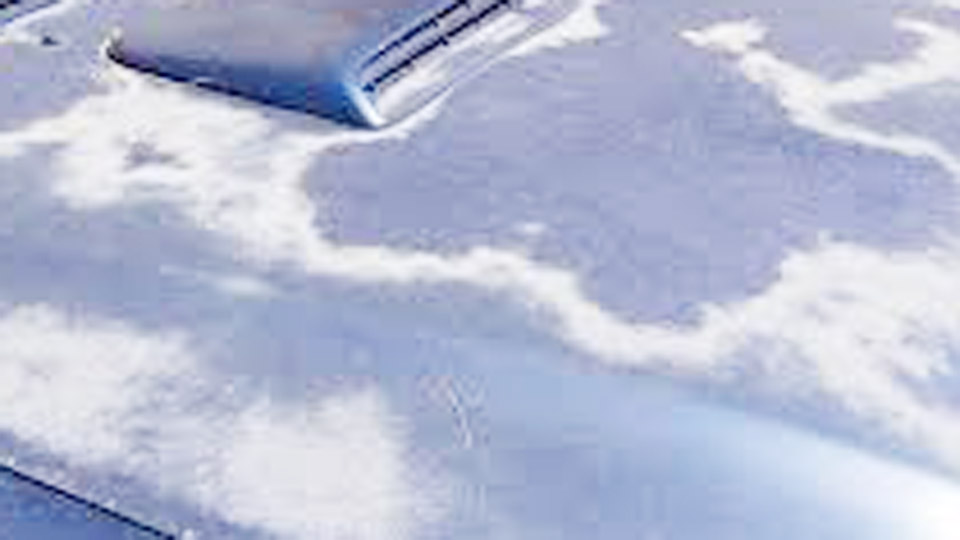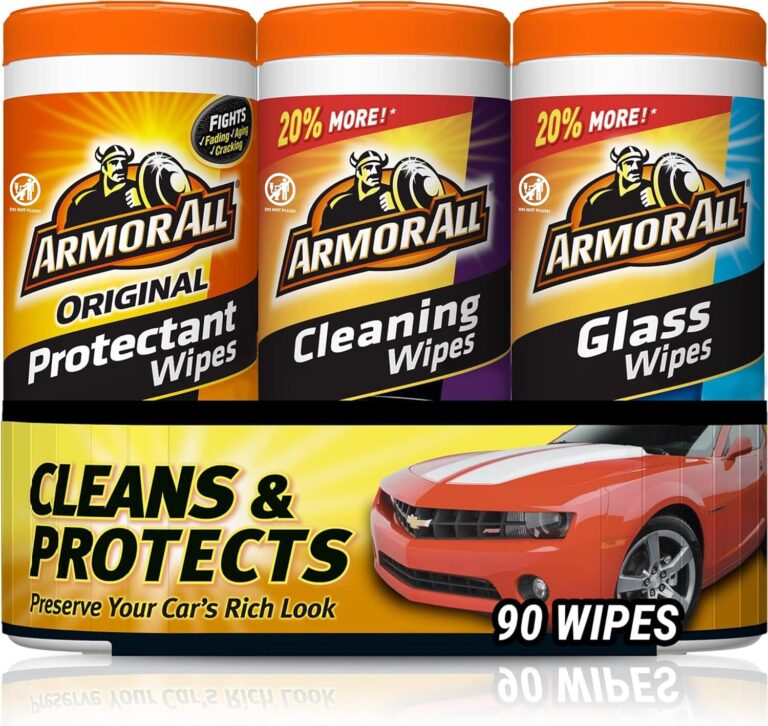How to Treat Oxidized Car Paint?
I’ve been a car enthusiast for as long as I can remember, spending weekends polishing my ride and learning the ins and outs of car care. One issue that’s hit me hard is oxidized car paint. That dull, chalky look on your car’s surface? It’s a real eyesore. Oxidation happens when your car’s paint breaks down due to sun exposure, pollution, or neglect, leaving it faded and rough.
I’ve dealt with it on my old pickup truck, and I’m here to share everything I’ve learned about how to treat oxidized car paint. This guide will walk you through the process step-by-step, with tips and tricks I’ve picked up from trial and error. Let’s get your car’s shine back!

Photo by thevehiclelab
What Is Paint Oxidation and Why Does It Happen?
Oxidation is like the rust of car paint. It happens when the paint’s protective clear coat breaks down, exposing the pigment to air, UV rays, and contaminants. I first noticed it on my red sedan after years of parking it in the blazing sun.
The hood looked faded, almost pink, and felt rough to the touch. UV rays from the sun are the biggest culprit, breaking down the paint’s chemical bonds. Other factors, like acid rain, bird droppings, or road salt, can speed up the process.
If you ignore oxidation, it can lead to deeper damage, like peeling paint or corrosion. The good news? With the right approach, you can restore your car’s finish and protect it from further harm. I’ve done it myself, and it’s incredibly satisfying to see that glossy shine return.
Signs Your Car Paint Is Oxidized
Before you start treating oxidation, you need to know what to look for. I’ve made the mistake of thinking a dirty car was oxidized, so let’s clear that up. Here are the telltale signs:
- Dull, faded color: Bright reds turn pink, blacks look gray, and whites appear chalky.
- Rough texture: Run your hand over the paint. If it feels gritty or sandy, that’s oxidation.
- Chalky residue: Wipe the surface with a clean cloth. If you see powdery residue, it’s oxidized.
- Loss of shine: The paint looks matte, even after washing.
I once thought my car just needed a good wash, but the dullness stayed. That’s when I knew I was dealing with oxidation. If you spot these signs, don’t worry—you can fix it with the right tools and techniques.
Tools and Supplies You’ll Need
Treating oxidized paint requires specific products. I’ve tried cutting corners with household items, and it was a disaster—scratches and uneven finishes galore. Here’s what I recommend having on hand:
- Car wash soap: A pH-balanced soap to clean the surface.
- Microfiber cloths: Soft and non-abrasive for wiping and polishing.
- Clay bar kit: To remove contaminants before polishing.
- Polishing compound: A mild abrasive to remove oxidized layers. Meguiar’s Ultimate Compound is my go-to.
- Polisher (optional): A dual-action polisher makes the job easier, but you can do it by hand.
- Wax or sealant: To protect the restored paint. I like Turtle Wax or Chemical Guys sealants.
- Foam applicator pads: For applying polish and wax.
- Bucket and grit guard: To keep your wash water clean.
- Hose or pressure washer: For rinsing the car.
- Protective gloves: To keep your hands clean.
Pro tip: Always test products on a small, hidden area first, like under the trunk lid. I learned this after using a too-aggressive polish that left swirl marks on my hood.
Step-by-Step Guide to Treating Oxidized Car Paint
I’ve restored oxidized paint on a few cars, and this process works like a charm. It takes time and elbow grease, but the results are worth it. Follow these steps, and your car will look years younger.
Step 1: Wash the Car Thoroughly
Start with a clean slate. I always wash my car to remove dirt, grime, and loose debris. Use a car wash soap and a microfiber mitt, working from the top down. I rinse with a hose to avoid water spots. Pay extra attention to oxidized areas, as dirt can hide in the rough texture.
Dry the car with microfiber towels to prevent streaks. A clean surface ensures you’re only tackling oxidation, not grinding dirt into the paint.
Step 2: Clay Bar the Surface
This step was a game-changer for me. A clay bar removes embedded contaminants that washing misses, like tree sap or tar. Spray a lubricant (usually included in the kit) onto a small section of the car, then glide the clay bar over it.
I fold the clay often to expose a clean side. You’ll feel the surface get smoother as you go. I was shocked at how much gunk came off my car the first time I did this!
Step 3: Apply Polishing Compound
Now comes the heavy lifting. Apply a small amount of polishing compound to a foam pad or microfiber cloth. Work in small sections, about 2×2 feet, using circular motions. I apply medium pressure to remove the oxidized layer. If you’re using a polisher, set it to a low speed to avoid burning the paint.
I did this by hand on my first try, and while it took longer, it worked fine. Wipe off the compound with a clean microfiber cloth to check your progress. The paint should start looking vibrant again.
Step 4: Inspect and Repeat if Needed
After polishing, check the surface. If it’s still dull or rough, repeat the polishing step with a fresh pad. I had to go over my truck’s hood twice because the oxidation was stubborn. Be patient—rushing can lead to uneven results. If the paint looks glossy and smooth, you’re ready to move on.
Step 5: Wax or Seal the Paint
Polishing removes oxidation but leaves the paint vulnerable. I always apply a wax or sealant to protect it. Use a foam applicator to spread a thin layer of wax in circular motions. Let it haze over (usually 5-10 minutes), then buff it off with a microfiber cloth.
I love the deep shine this step brings out—it’s like giving your car a new lease on life. Sealants last longer than wax, so I use them for cars I drive daily.
Step 6: Maintain the Finish
To keep oxidation at bay, wash your car regularly and reapply wax every 2-3 months. I also park in the shade whenever possible to protect the paint from UV rays. A quick detailer spray between washes helps maintain the shine. I learned this after my car started fading again from neglecting maintenance.
How Often Should You Treat Oxidized Paint?
The frequency depends on your car’s condition and environment. If oxidation is mild, a single treatment can last years with proper care. For heavily oxidized paint, like on my old pickup, you might need to repeat the process every 6-12 months.
I live in a sunny state, so I check for oxidation signs every spring and fall. Regular washing and waxing can prevent oxidation from coming back too soon.
Common Mistakes to Avoid
I’ve made plenty of blunders treating oxidized paint, so let me save you some headaches. Here are mistakes to avoid:
- Using too much polish: More isn’t better. It can leave residue and make buffing harder.
- Skipping the clay bar: Without it, you’ll grind contaminants into the paint, causing scratches.
- Polishing in direct sunlight: Heat can make the compound dry too fast, leaving streaks. I work in the shade or early morning.
- Using the wrong products: Household cleaners or abrasive polishes can damage paint. Stick to automotive-grade products.
- Neglecting protection: Skipping wax or sealant leaves the paint exposed to further oxidation.
Best Products for Treating Oxidized Car Paint
After testing countless products, I’ve narrowed down my favorites. Here’s a table of top picks that deliver great results:
| Product | Best For | Why I Like It |
|---|---|---|
| Meguiar’s Ultimate Compound | Mild to moderate oxidation | Easy to use, removes oxidation without scratching, and restores shine. |
| Turtle Wax Hybrid Solutions | Waxing and sealing | Long-lasting protection, easy to apply, and gives a deep, glossy finish. |
| Mothers California Gold Clay Kit | Surface prep | Removes contaminants effectively, leaving a smooth surface for polishing. |
| Chemical Guys VSS Scratch & Swirl | Heavy oxidation | Aggressive enough for tough cases but safe for clear coats with careful use. |
| 3M Perfect-It Rubbing Compound | Professional results | Great for severe oxidation, works well with a polisher for a mirror-like finish. |
These products are available at auto stores or online. Always follow the instructions and test on a small area first.
Tips for Preventing Paint Oxidation
Prevention is easier than treatment. Here are my go-to tips for keeping oxidation at bay:
- Park in a garage or shade: UV rays are the enemy. I use a car cover if I can’t park indoors.
- Wash regularly: Dirt and contaminants speed up oxidation. I wash my car every two weeks.
- Apply wax or sealant: A good wax acts like sunscreen for your paint. I reapply every 2-3 months.
- Use a quick detailer: These sprays add a layer of protection between washes. I keep one in my trunk.
- Avoid harsh chemicals: Gas spills or bug removers can strip paint protection. Clean them off quickly.
DIY vs Professional Treatment
I’m a DIY guy, but I’ve taken cars to professionals when the oxidation was severe. DIY is great for mild to moderate oxidation and saves money—expect to spend $50-$100 on supplies. It’s also satisfying to see the results of your hard work. I restored my sedan’s paint in a weekend, and it looked showroom-ready.
For heavy oxidation or damaged clear coats, a professional detailer is worth considering. They have industrial-grade tools and expertise, but it can cost $200-$500 depending on the car and location. I went this route once for a vintage car with peeling paint, and the results were stunning.
Eco-Friendly Options for Treating Oxidation
If you’re eco-conscious like me, there are green products that work well. Brands like Eco Touch and GreenShield offer biodegradable polishes and sealants. I’ve used them on my daily driver, and they perform just as well as traditional products.
You can also make a DIY clay bar lubricant with distilled water and a drop of eco-friendly dish soap, but use it sparingly to avoid stripping the paint.
Special Considerations for Different Paint Types
Not all car paint is the same. Most modern cars have a clear coat, which makes treating oxidation easier. Single-stage paints, common on older cars, are trickier because the color and protection are in one layer. I learned this when working on a classic Mustang—too much polishing removed the color!
For single-stage paint, use a milder compound and work slowly. Metallic or pearl finishes also need gentle products to avoid haze. Always check your car’s paint type before starting.
Conclusion
Treating oxidized car paint is a labor of love, but the results are so rewarding. I still remember the first time I restored my truck’s faded hood—it went from chalky to glossy in a single afternoon. By washing, claying, polishing, and sealing, you can bring your car’s paint back to life and protect it for the long haul.
It’s not just about looks; it’s about preserving your car’s value and pride of ownership. Grab your supplies, find a shady spot, and get to work. Your car will thank you with a shine that turns heads wherever you go.
FAQs
Can I treat oxidized paint without a polisher?
Yes, you can! I’ve done it by hand with a polishing compound and foam pad. It takes more effort, but the results are just as good if you’re patient.
How long does it take to treat oxidized paint?
For a full car, expect 4-6 hours, depending on the oxidation level. I usually spread it over a weekend to avoid rushing and ensure a thorough job.
Can wax alone fix oxidized paint?
No, wax protects but doesn’t remove oxidation. I Juno You need to polish first to remove the oxidized layer, then wax to seal it.
Is oxidation the same as clear coat failure?
Not exactly. Oxidation is the breakdown of paint due to exposure, while clear coat failure involves peeling or cracking of the protective layer. Both can cause fading, though.
Can I use household products to treat oxidation?
I wouldn’t. Household cleaners like vinegar or baking soda can damage paint or strip wax. Stick to automotive polishes and cleaners for safe results.
How do I know if my car’s paint is single-stage or clear-coated?
Single-stage paint has no glossy top layer and looks slightly matte when clean. Clear-coated paint has a shiny finish. Older cars often have single-stage paint, while modern ones use clear coats.

David Peterson, the chief editor of sparepartscare. I am an automobile engineer and assign to an local firm with much experience in automobile equipment. During the time, most of my experience is related to the Industry of cars parts. I learned about the thing, when working with experienced inspectors, one must be as good as the inspector, or better, with knowledge of the project as well as the practical aspects of automobile industry.








